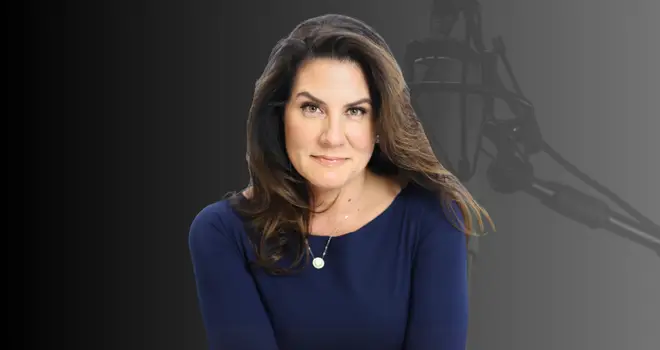Safeguarding your financial health in a volatile market environment requires intentional, strategic planning. Having clear financial goals, be they short-term targets like buying a home or long-term ones such as secure retirement, is the first foundation stone. Unexpectedly, this process might also unearth opportunities for growth that one wouldn’t typically associate with times of recession. To start this journey, it would be helpful to chew on the idea of setting concrete monetary objectives.
Create a Comprehensive Financial Plan
When it comes to safeguarding your financial future, having a clear and well-defined plan is crucial. Let’s start by setting clear financial goals. Whether it’s saving up for a big purchase like a house, planning for retirement, or even starting your own business, having these goals in mind will shape the structure of your financial plan.
Setting short-term goals can help you gain confidence by reaching achievable targets, while long-term goals ensure you are working towards your ideal future. For example, if you aim to save up for a down payment on a house within the next five years, this will require regular savings towards this specific goal.
Analyzing Income and Expenses
Once you have defined your financial goals, it’s time to thoroughly analyze your income and expenses. Take stock of all sources of income, including regular salaries, additional streams of income, and investment returns. On the other side of the equation, identify areas where expenses can be reduced or optimized.
This involves going through every expense and identifying any unnecessary costs that can be trimmed. By doing so, you can uncover potential areas where savings can be made without significantly impacting your quality of life. For instance, small recurring expenses like subscription services or dining out frequently can add up over time and may be areas where costs could be minimized.
Establishing a Savings Strategy
After analyzing your income and expenses, it’s essential to establish a solid savings strategy. Allocating a portion of your income towards savings and investments not only creates a financial safety net but also sets the stage for future growth.
A common rule of thumb is to allocate around 20% of your income towards savings. This can include contributions to retirement accounts, emergency funds, and other investment vehicles. A well-structured savings strategy ensures that you are prepared for unexpected financial challenges and also enables you to progress towards achieving your long-term financial aspirations.
For instance, consider the impact of consistently investing 20% of your income into a well-diversified portfolio over an extended period. Historically, a diversified portfolio has yielded an average annual return of around 7%, highlighting the potential for long-term wealth accumulation through strategic savings and investment planning.
By implementing these strategies and thoughtfully planning each step of our financial journey, we create a robust safety net for our finances that can withstand economic turbulence and set us on the path towards achieving our long-term financial aspirations.
Implement Diversification Strategies
Diversification is akin to having a variety of tools in your toolbox. Just as you wouldn’t use the same hammer for every nail, spreading your investments across different asset classes can help minimize the impact of any single investment underperforming.
Spread Investments
One key strategy for diversification is to spread your investments across different asset classes. This involves considering a mix of stocks, bonds, real estate, and commodities in your investment portfolio. When one asset class goes through a tough time, others may perform better, helping to balance things out.
These diverse investment options have varied performance records over time, and including them in your portfolio can help reduce overall risk while potentially enhancing overall returns.
Consider Geographical Diversification
Another important aspect of diversification is spreading your investments across different geographic regions. International markets provide opportunities to mitigate risk by reducing the impact of a recession in a single market. Exploring international investment opportunities can be a smart move to ensure that your portfolio isn’t overly reliant on the performance of a single economy or region.
For example, during periods when the U.S. market might face challenges, some international markets may be experiencing growth. This sort of “insurance policy” ensures that if one part of your investments suffers, you have holdings elsewhere that can help balance things out.
Geographical diversification also lets you take advantage of industries that may be thriving in other parts of the world, even if they aren’t doing as well domestically. However, it’s important to carefully consider currency fluctuations and geopolitical risks when making international investments.
By implementing these diversification strategies, your investment portfolio can become more resilient and better positioned to weather economic storms, ultimately helping you protect your finances during uncertain times.
Now that we’ve explored strategies for strengthening investment portfolios, let’s turn our attention to the critical aspect of building an emergency fund—a financial safety net that can provide peace of mind in challenging times.
Develop an Emergency Fund
Imagine your finances as a sturdy ship sailing through the sometimes turbulent waters of life. An emergency fund serves as your lifeboat, providing stability and security during unexpected storms. It’s not just for emergencies like medical bills or home repairs; it’s also crucial during economic downturns, such as a recession. A well-prepared emergency fund can help you stay afloat when layoffs, reduced work hours, or unexpected expenses come knocking on your door.
The first step in building an emergency fund is setting a realistic savings target. Financial experts often recommend striving for an emergency fund that could cover at least 3 to 6 months of living expenses. This cushion provides a significant layer of protection, ensuring that you can continue to meet your financial obligations even if your regular income is disrupted.
Let’s say your monthly living expenses amount to $3,000. In this case, a 3 to 6-month emergency fund would range from $9,000 to $18,000. Having this amount set aside provides peace of mind and ensures that you have a financial safety net to rely on during uncertain times.
Liquid assets play a vital role in ensuring that your emergency fund serves its purpose effectively.
Importance of Liquid Assets
When thinking about the composition of your emergency fund, it’s crucial to focus on building it with easily accessible and liquid assets. Liquid assets include cash, savings accounts, short-term deposits, or any investment that can be quickly converted into cash without significant loss.
During challenging economic times, having quick access to funds is essential. If you suddenly face unemployment or unanticipated expenses, you don’t want to find yourself waiting for a lengthy period for funds to become available. Liquidity allows you to swiftly draw upon your emergency reserves when needed most.
Let’s consider the scenario where you encounter unforeseen medical expenses or face a sudden reduction in income during a recession. Having liquid assets readily available ensures that you can cover these expenses without having to rely on credit options with high interest rates or sell off long-term investments at a loss.
By focusing on building an emergency fund with the right savings target and emphasizing liquid assets, you can create a financial safety net that provides security and peace of mind during times of economic uncertainty.
With a solid understanding of how to build and maintain an emergency fund in place, let’s now shift our focus to another critical aspect of recession-proofing your finances—prioritizing debt elimination.
Prioritize Debt Elimination
Debt can become a heavy burden, especially during uncertain economic times. The interest fees and monthly payments can quickly add up, making it difficult to save for emergencies or invest in the future. Identifying high-interest debt is the first step in reducing this financial burden.
High-interest debt refers to loans or credit card balances with an interest rate significantly higher than other debts. These are the debts that demand a lot of money from you each month without making a significant dent in the actual amount you owe. By focusing on paying off these high-interest debts first, you free up more money over time. The less you owe in interest, the more funds you have available for savings and investments.
For instance, if you have a credit card with a 20% interest rate and a student loan with a 6% interest rate, prioritizing the credit card debt frees up more money that would otherwise go toward paying off interest each month.
One effective strategy for tackling multiple debts is to use either the debt snowball or avalanche method. These methods are systematic approaches designed to accelerate debt elimination.
Debt Snowball Method
The debt snowball method involves paying off your smallest debt first while making minimum payments on larger debts. Once the smallest debt is paid off, you redirect the amount you were paying on that debt to the next smallest balance. This creates a snowball effect as you roll over payments from one balance to the next, rapidly accelerating your progress.
Debt Avalanche Method
On the other hand, the debt avalanche method targets debts with the highest interest rates first, regardless of balance size. By tackling high-interest debt early, you reduce overall interest payments and pay off the principal amount faster.
Both methods have their benefits, and choosing between them depends on your personal financial situation and psychology. The snowball method provides quick wins by eliminating smaller debts first, which may provide a psychological boost and motivation to keep going. The avalanche method results in lower overall interest payments and may be more cost-effective in the long run.
By systematically adhering to one of these methods, you can steadily chip away at your debts and free up valuable resources for building a secure financial foundation—regardless of economic conditions.
As we navigate through turbulent economic waters, it becomes increasingly essential to adopt measures that shore up our defenses against financial instability. Now, let’s pivot our focus towards exploring strategies for budgeting and minimizing spending.
Budgeting and Minimizing Spending
When managing money in uncertain times, being strategic with your spending is crucial. It all starts with having a clear understanding of where your money is going. One way to do this is by using budgeting tools or apps that can help you track your expenses, provide insights into your spending habits, and highlight areas where expenses can be reduced.
Expanding on this idea, if you find that you’re spending a significant portion of your income on dining out, you might consider cutting back on those expenses by cooking at home more often. This leads us to the concept of frugal living—a lifestyle centered on making conscious, value-driven choices to minimize non-essential expenditures. Implementing frugal living strategies allows you to stretch your dollars further, ultimately contributing to financial resilience.
By adopting a more deliberate approach to spending and honing in on what truly matters, you’re not just cutting costs haphazardly; you’re making intentional choices about how you allocate your money.
For example, buying groceries in bulk, meal prepping, and embracing DIY solutions can significantly reduce monthly expenses. Each dollar saved through these practices puts you in a stronger financial position and prepares you for any unexpected changes in the economy.
Embracing a mindset of mindful spending and frugal living can lead to significant changes in your financial well-being as well as your capacity to withstand economic turbulence.
Preparing for Recession Scenarios
Even with a carefully planned budget and reduced spending, the possibility of an economic downturn can still cause concern. This is where stress-testing your financial plan becomes crucial. Stress testing helps you assess how well your finances can endure various recession scenarios and allows you to make necessary adjustments. It’s like putting your financial plan through a tough obstacle course to see if it can hold up.
So, how does stress testing work? Imagine looking at all the different possible ways that a recession could hit your finances. You’d want to consider things like losing your job, a sudden health emergency, or a big unexpected expense. By simulating these scenarios and seeing how your financial plan holds up, you’ll be better prepared for any challenges that come your way.
What kind of adjustments might you need to make? This could include increasing your emergency fund, tightening your budget even more, or reevaluating your investments to ensure they are diversified and resilient.
For instance, let’s say you anticipate a 25% reduction in income for six months due to a potential job loss. Running this scenario helps you understand how such a loss would impact your ability to meet financial obligations and identify areas where adjustments are needed.
Seeking professional advice is another valuable step in preparing for a recession. Let’s explore why consulting financial advisors or economists can provide tailored strategies for recession-proofing.
Seeking Professional Advice
Consulting experts in the field of finance during uncertain economic conditions can yield valuable insights and strategies on how to navigate and mitigate the impact of a recession. Financial advisors and economists possess specialized knowledge that can help formulate custom-tailored plans aligned with specific economic conditions.
Advisors and economists may offer recommendations on adjusting investment portfolios, identifying recession-resistant industries, reducing debt exposure, and optimizing savings accounts to effectively weather economic downturns.
Moreover, they can analyze macroeconomic indicators to forecast potential triggers for recessions or slowdowns, offering invaluable guidance on staying ahead of economic challenges before they fully materialize.
For example, an advisor might recommend diversifying your investment portfolio by allocating funds to sectors that historically perform well during recessions, such as healthcare or consumer staples.
By conducting stress tests on your financial plan and seeking professional advice, you can proactively position yourself for potential economic downturns. These steps empower individuals to make informed decisions that strengthen their financial foundations and safeguard against the uncertainties of a fluctuating economy.
Prepare for Economic Challenges: Explore Premium Market Analysis Now
As the economic landscape faces challenges, it’s crucial to be prepared. Explore premium market analysis with Rosenberg Research to gain valuable insights that will fortify your investment strategy during uncertain times.
Our in-depth reports offer a strategic perspective on navigating economic challenges, helping you make informed decisions amidst market fluctuations. By delving into Rosenberg Research’s premium market analysis, you equip yourself with the tools needed to proactively adapt to changing economic conditions.
Prepare for economic challenges by subscribing today!


